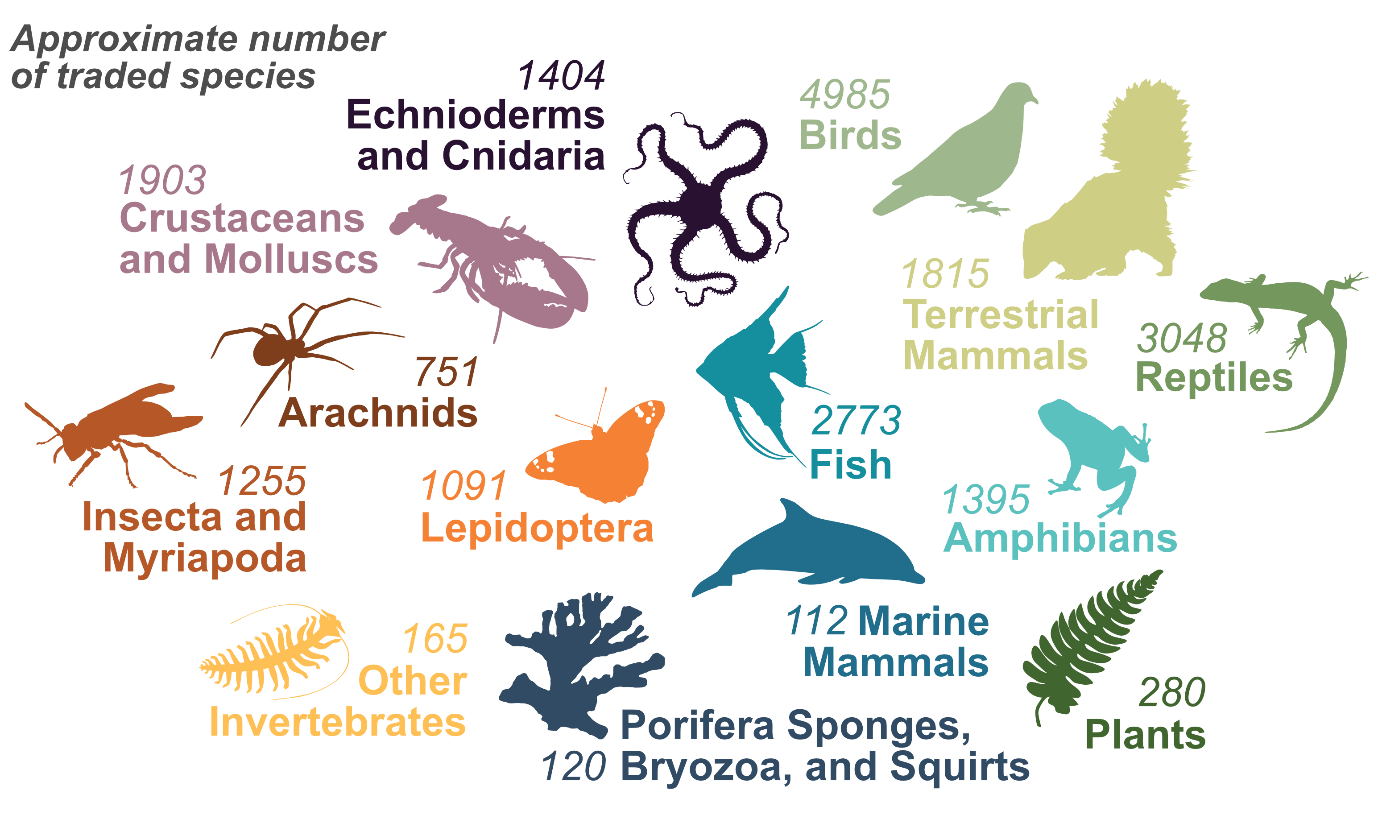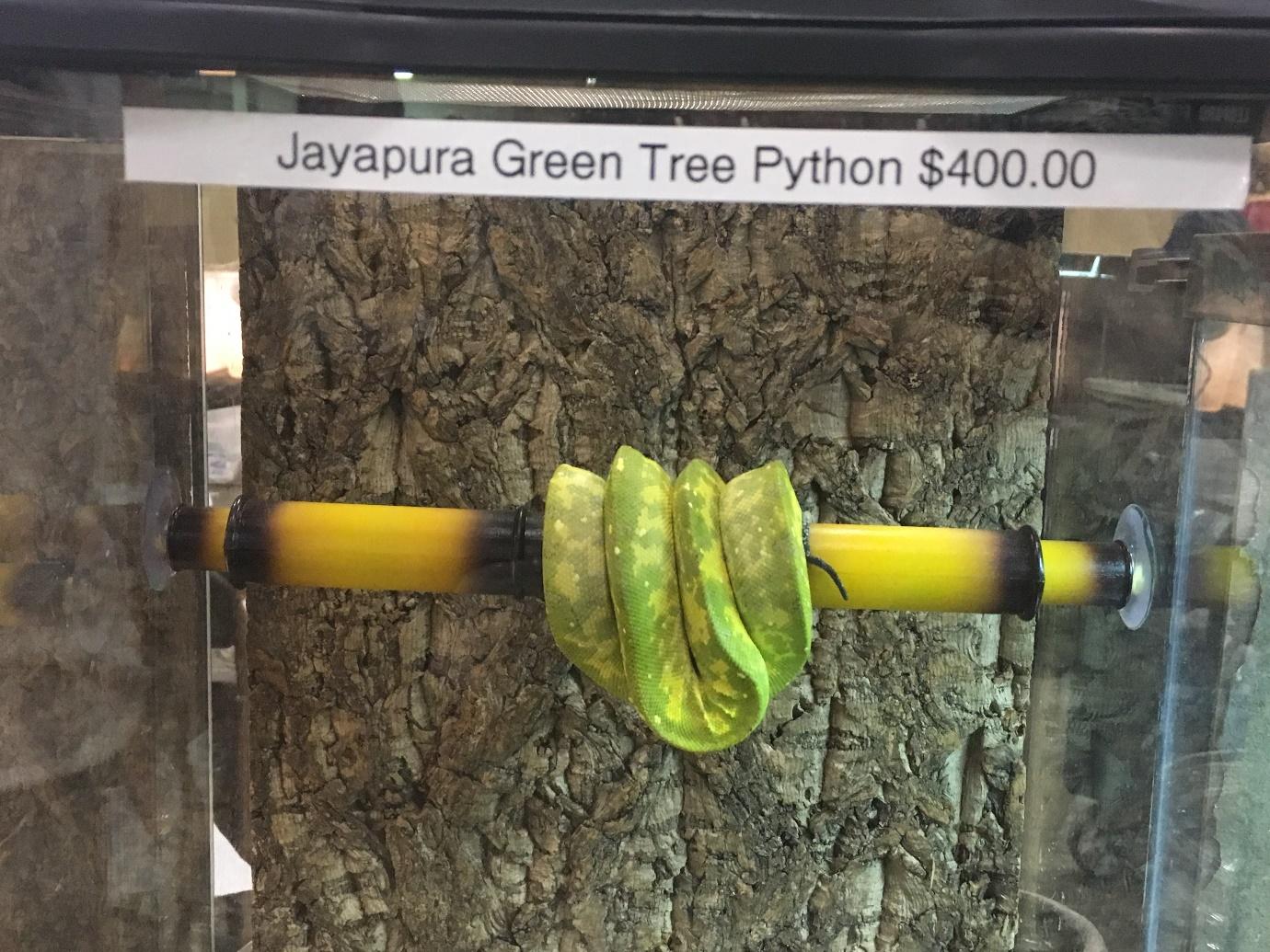What Is the True Extent of Worldwide Species Trade?
Recent findings based on data from the U.S. Fish and Wildlife Service offer a glimpse into the vast global trade network and the pressing need for global data standardization.
Wildlife trade is one of the most pressing threats to the survival of countless species across the globe. A 2022 assessment by the Intergovernmental Science-Policy Platform on Biodiversity and Ecosystem Services (IPBES) estimated that at least 50,000 species are currently involved in trade, supporting livelihoods globally. However, this figure overlooks critical sectors, such as the booming pet trade. Data now show that certain groups, like butterflies traded as pets or collectibles, outnumber all other terrestrial arthropods combined in trade volume. This raises a crucial question: how many wild species are truly being traded worldwide?
Answering this question is complex. Species classified as potentially endangered by trade may fall under the monitoring framework of the Convention on International Trade in Endangered Species of Wild Fauna and Flora (CITES). However, the majority of wildlife trade remains legal and operates outside any comprehensive international legislation or monitoring system. The United States stands as an exception, with its U.S. Fish and Wildlife Service meticulously recording traded wildlife through the Law Enforcement Management Information System (LEMIS). This provides a rare glimpse into the scope of the issue.
Drawing on 22 years of data, an international team of researchers, with lead author Benjamin Marshall at Scotland’s University of Stirling and including Professor Meredith Gore at the Department of Geographical Sciences, examined the dimensions of wildlife trade, producing one of the most comprehensive analyses to date. Between 1999 and 2021, the United States traded nearly 30,000 wild species and over 2.85 billion individual animals. Remarkably, more than half of animals from most species were sourced directly from the wild.

Data from LEMIS on wildlife in trade. When data from CITES is included this figure increases by almost 8,000 largely due to the import of wild plant species.
“Sometimes, though not always, illegal trade in wildlife overlaps with legal trade,” said Gore, whose research mostly focuses on illegal wildlife trade. Gore helped contribute to the multidisciplinary interpretation of results and communication of findings to maximize the science-to-practice pipeline.
“To me, one of the most interesting findings from the analysis was that so many species continue to be sourced from the wild,” said Gore. “This is noteworthy because it means that there are still many places on the planet where wild populations are still able to be of sufficient size to be found andin order to be traded … This finding also reinforces the need for standardized comprehensive datasets to track the impact of trade on these wild populations.”
While the U.S. data allow for detailed monitoring of animals entering the country, comparable datasets are not available for other parts of the world. For most traded species, the lack of information on the status of wild populations prevents any meaningful assessment of sustainability.

Jayapura green tree python, likely from the wild. Courtesy of Julie Lockwood.
This paper underscores the true scale and diversity of legal wildlife trade and the urgent need for a standardized global database to provide the data essential for sustainably managing trade. It also advances the understanding of trade, with the developed codes enabling the standardization and analysis of future trade data.
“This study helps illustrate the realm of the possible if global datasets existed using the best available data at hand,” Gore explained.
As the second part of the United Nations Biodiversity Conference (CBD-COP16) approaches in February, the researchers hope this paper will inspire other nations to assess how their wildlife trade data is recorded and shared. Without more comparable global data, the impact of trade on most species remains hard to determine.
Citation: Marshall, B. M., Alamshah, A. L., Cardoso, P., Cassey, P., Chekunov, S., Eskew, E. A., Fukushima, C. S., García-Díaz, P., Gore, M. L., Lockwood, J. L., Rhyne, A. L., Sinclair, J. S., Strine, C. T., Stringham, O. C., Tlusty, M. F., Valdez, J. W., Watters, F., & Hughes, A. C. (2025). The magnitude of legal wildlife trade and implications for species survival. Proceedings of the National Academy of Sciences, 122(2). https://doi.org/10.1073/pnas.2410774121
For more information, contact Associate Professor Alice C. Hughes at the Univesity of Hong Kong.
Main image: A Rhinocerous takes a mud bath in Zambia. Coutersy of Meredith Gore
Published on Fri, 01/10/2025 - 09:18

